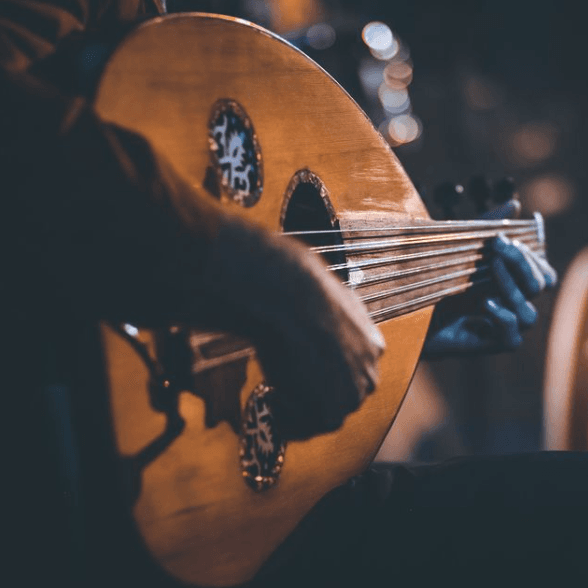Oud and Saz Bağlama are both string instruments with origins in the Middle East and Central Asia respectively. While they share some similarities, they also have several differences in terms of their construction, playing techniques, sound, and cultural significance.
1. Origins and Cultural Significance:

Oud:
The oud is a Middle Eastern instrument with roots dating back thousands of years. It holds significant cultural and historical importance in countries like Egypt, Turkey, Iraq, and others in the region. It’s often associated with classical, folk, and traditional music genres in these areas.

Saz Bağlama:
The saz bağlama, commonly referred to as saz, is a Turkish string instrument with origins in Central Asia. It’s particularly popular in Turkish folk music and is considered the national instrument of Turkey. It’s also found in regions influenced by Turkish culture such as Azerbaijan and parts of the Balkans.
2. Construction:
Oud:
The oud typically has a rounded back and a short neck, usually with 11 or 13 strings. It’s pear-shaped and traditionally has gut strings, although modern versions may use nylon or metal strings. It doesn’t have frets, and the strings are usually played with a pick or fingers.
Saz Bağlama:
The saz bağlama has a long neck with a small, elongated body and a flat back. It usually has three courses of strings, totaling around six strings, though variations exist with more strings. It features movable frets called “akort,” allowing for various tuning options. It’s played with a pick called a “mızrap.”
3. Playing Techniques:
Oud:
Oud players often use a combination of plucking and strumming techniques. The absence of frets allows for continuous pitch variation, giving players the ability to play microtonal music common in Middle Eastern traditions.
Saz Bağlama:
Saz players primarily use a picking technique with the mızrap to strike the strings. The movable frets allow for different tuning systems and microtonal variations as well. Saz music often involves intricate melodic lines and rhythmic patterns.
4. Sound:
Oud:
The oud has a warm, mellow tone with a rich resonance, characteristic of Middle Eastern music. Its sound is often described as soulful and expressive, suitable for both solo performances and accompaniment.
Saz Bağlama:
The saz bağlama has a bright, twangy sound with a sharp attack due to its metallic strings and picking technique. It’s known for its vibrant and energetic sound, ideal for driving rhythms and lively folk melodies.
5. Repertoire and Usage:
Oud:
The oud is used in a wide range of musical genres including classical, folk, and contemporary Middle Eastern music. It’s often featured in solo performances, ensembles, and as an accompanying instrument for singers and other musicians.
Saz Bağlama:
The saz bağlama is primarily associated with Turkish folk music but is also used in various other genres including classical Ottoman music, contemporary Turkish music, and fusion styles. It’s often played in small ensembles or as a solo instrument in both informal and formal settings.
In summary, while both the oud and saz bağlama are string instruments with Middle Eastern and Central Asian origins, they have distinct differences in construction, playing techniques, sound characteristics, and cultural significance, reflecting the diverse musical traditions of their respective regions.
Experience the Melodies of the East at OudAndMoreMusic.com! Dive into a world of enchanting Turkish and Arabic music instruments. From the mesmerizing tones of the oud to the rhythmic beats of the darbuka, our collection is a treasure trove for music enthusiasts. Explore our website to discover a harmonious blend of tradition and innovation. Whether you’re a seasoned musician or a curious beginner, our instruments will ignite your passion for music. Shop now and embark on a musical journey like no other!




